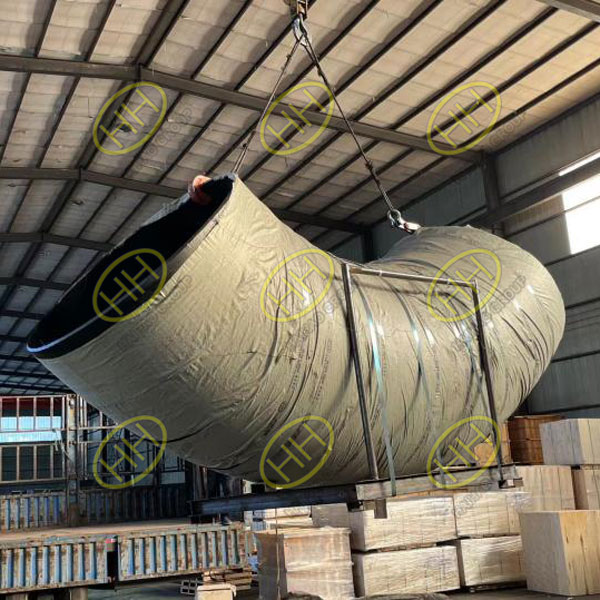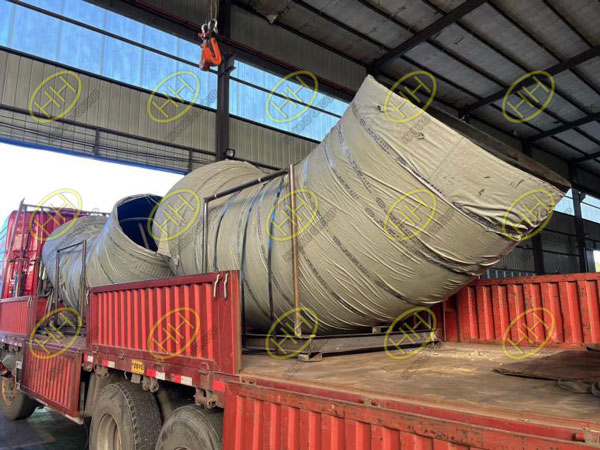Reasons for affecting the cutting accuracy of large diameter elbows
When it comes to manufacturing large-diameter elbows, precision is of the utmost importance. Many factors can influence the accuracy of material feeding during the production process, and it’s essential to consider these factors for optimal results. Here are some key factors affecting the precision of material feeding:
1.Alignment of the Center Lines: The centerline of the material feeding device and the centerline of the stamping machinery must be perfectly aligned. When these centerlines are not in sync, the material unfurls relative to the mold, introducing angles that create significant resistance. This misalignment drastically reduces the accuracy of material feeding.
2.Waveform of Material: The material’s undulating characteristics in the longitudinal direction should be minimal. As the material thickness increases, the undulating effect becomes more pronounced. In severe cases, variations of over 5mm within a length range of 2000mm render the material unsuitable for feeding.
3.Surface Roughness: Surfaces with higher roughness, such as those found on steel plates or between the feeding device rollers, exhibit increased friction coefficients. This increased friction enhances the precision of large-diameter elbow feeding. It’s essential to note that roughened surfaces on rolled steel plates result from minor surface irregularities during cold rolling and can facilitate deep drawing processes.
4.Minimal Gear Clearances: The gear clearances driving the feeding rollers should be minimal. This allows the servo motor driving the feeding rollers to operate flexibly, adjusting the speed as needed.
5.Impact of Rolling Oil: The precision of material feeding is affected by the residual rolling oil film. If the rolled material is stored for extended periods post-rolling, the rolling oil may undergo desiccation, leading to solidification. When material feeding commences, the material might slide against the feeding rollers, causing a decrease in accuracy.
6.Shearing and Cutting: When large-diameter elbow materials are cut from wide sheets, precision and rigidity of the cutting device play a critical role. Material undulations, both positive and negative, can occur due to variations in the precision and rigidity of the shearing device. As the material passes through the guiding columns within the mold, excessively narrow materials can introduce gaps and vibrations, reducing feeding precision. Conversely, overly wide materials may experience deformation due to compression at the guiding columns, leading to a substantial decrease in feeding accuracy.
7.Material Thickness Variation: Large-diameter elbow coil materials are created by bending wide-rolled steel plates. The areas closer to the center exhibit higher precision, whereas both ends in the width direction show gradual thinning. As a result, the thickness accuracy decreases significantly. When working with coil materials characterized by poor width accuracy, feeding precision can be compromised.
At Haihao Group, we understand the intricacies of large-diameter elbow production. By meticulously addressing these factors, we ensure the highest level of precision in material feeding. Our dedication to quality and constant vigilance regarding market dynamics guarantees the finest products and services for our customers. Trust us for excellence in large-diameter elbow manufacturing.


